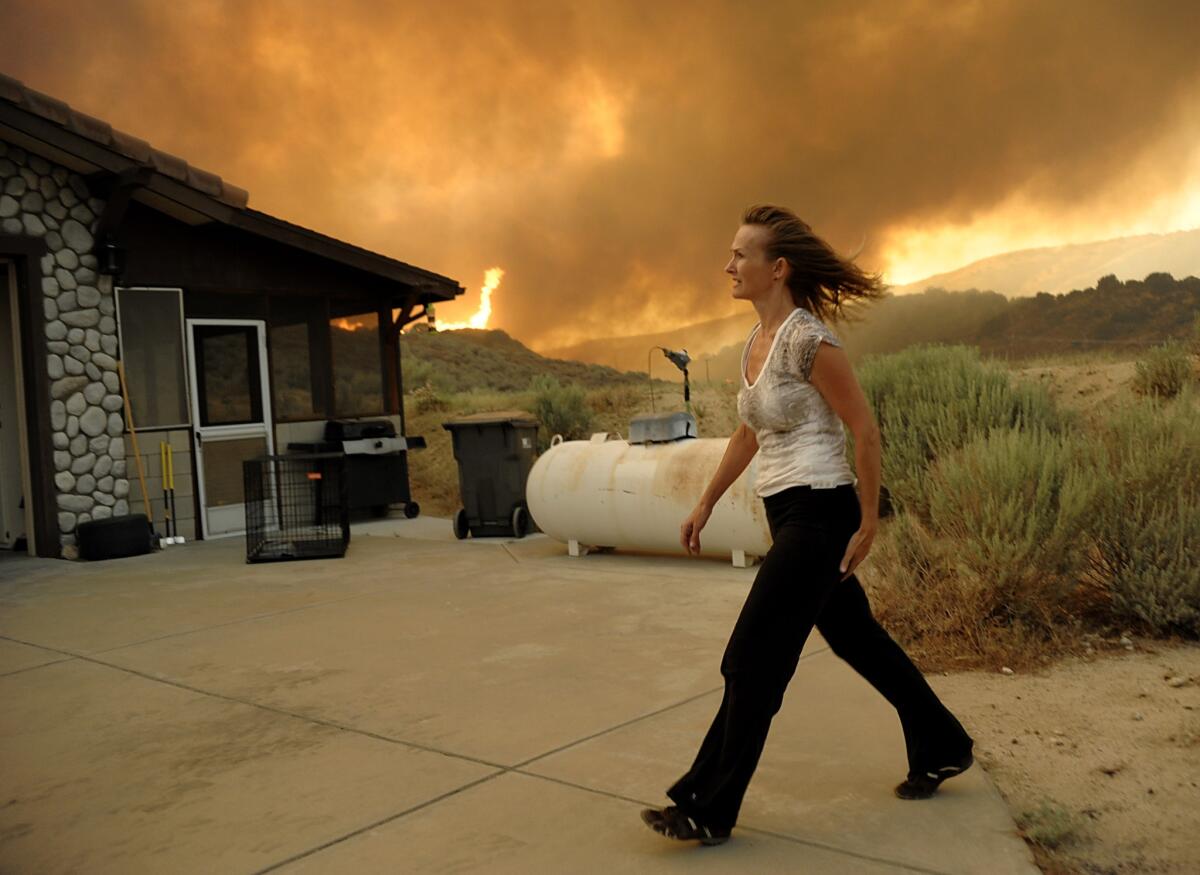Cal Fire’s flawed fire plan

- Share via
California has a love-hate relationship with wildfire. We can’t live with it and can’t live without it. For thousands of years, fire — caused mainly by lightning — was a natural part of the landscape, which evolved to thrive on and even require occasional blazes. The cones of the Tecate cypress, for example, a tree that grows only in Southern California and Baja Mexico, will open to release their seeds only after a scorching.
Yet out-of-control fires also imperil property, homes and sometimes lives. And when they blacken the same ground too often, they devastate nature as well, creating the conditions for invasive annual weeds to dominate, weeds that take away habitat for animals and provide more combustible fuel for future fires. Most wildfires in Southern California now are caused by humans, and they’re far more frequent.
Obviously, the task of protecting the public from wildfires without imperiling the balance of nature is complicated. It calls for exacting science and sensitivity to the many ecosystems found in the state — scrub, chaparral, coastal redwood forests, ponderosa pine forests of the Sierra Nevada and more.
Unfortunately, that’s not what California has gotten in a draft environmental impact report from the state Department of Forestry and Fire Protection that outlines fire-management plans for 38 million acres of the state — pretty much all the land that isn’t controlled by the federal government. The 1,300-page Cal Fire report, called a program EIR, is intended to set out an overarching policy for deciding where and how to alter the natural landscape to curb wildfire’s threat to buildings and lives. Once it is approved by the state Board of Forestry and Fire Protection, individual projects to thin or clear vegetation mechanically, spray herbicides or conduct prescribed burns would not need to undergo separate environmental studies under the California Environmental Quality Act.
For all its length, though, the report is disturbingly vague about what the state proposes to do and where. Many wildfire experts say the study is outdated on the science of fire ecology and treats very different natural landscapes as though they were the same. The state’s Department of Fish and Wildlife responded to the report with serious criticisms, saying among other things that the plan could cause substantial environmental damage. A letter from the National Park Service is downright scathing, slamming the report for numerous inaccuracies, accusing Cal Fire of ignoring important scientific studies and openly questioning whether the plan even meets the legal requirements for this type of EIR.
“If implemented, the proposed program would cause significant, irreversible and unmitigable environmental impacts to natural resources in the Santa Monica Mountains National Recreation Area on a large scale, while producing few if any of the fire safety benefits stated as goals of the program. As such, it would represent a very poor use of public funds,” wrote Robert S. Taylor Jr., a fire specialist with the Park Service. “I strongly recommend that Cal Fire withdraw the current proposal and produce a new one based on best available science.”
Both agencies criticize the report’s call for fire breaks in the backcountry, far from developed land. Most of the blazes that cause serious damage to homes, fire ecologists say, occur in the most extreme conditions — hot weather, dry vegetation and Santa Ana-strength winds. They skip right across fire breaks in the backcountry; the best way to prevent or reduce damage is to create 100 feet or so of thinned, defensible space between buildings and the wilderness so that firefighters have safe access.
Though George Gentry, Cal Fire’s executive officer, concedes that the report might be too vague, he defends it by saying that plans to thin, mow, burn or spray specific areas would go through further approval processes. That isn’t good enough. Future fire-mitigating actions will be based on this document, or what’s the point? If the EIR is adopted, no one will be able to use CEQA, the state’s signature environmental protection law, to prevent possibly useless work at taxpayer expense that also might irreversibly damage the state’s wild land.
Instead of tweaking the report and taking it to the board for approval this spring as planned, Cal Fire should adopt Taylor’s suggestion, withdraw the EIR and start over — consulting the experts who pointed out its flaws. If California is to have a comprehensive plan for surviving in a fire-prone region, it should be the strongest one possible.
More to Read
A cure for the common opinion
Get thought-provoking perspectives with our weekly newsletter.
You may occasionally receive promotional content from the Los Angeles Times.






